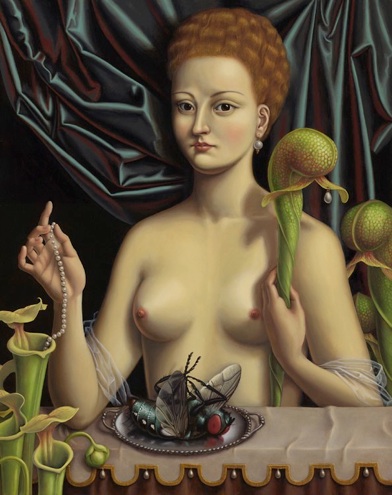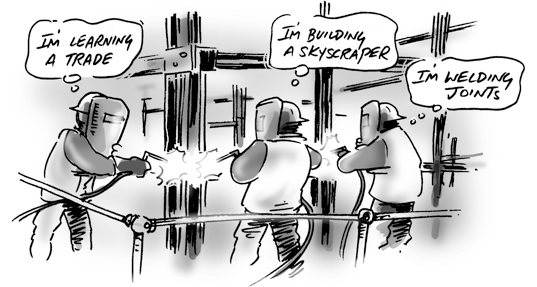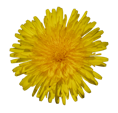distinctions reveal and obscure regularities


artworks in this unit
The art used in this unit, both in the videos and on the webpages is by Madeline von Foerster, the grand-daughter of Heinz von Foerster who was a close friend of Humberto Maturana. Madeline is of course an artist in her own right, irrespective of these connections that made me aware of her work. Her website is:
http://www.madelinevonfoerster.com/
Its worth having a look just to see the modern use of very traditional methods that demand a high degree of skill as well as vision. Her work compels thought.
As the observer distinguishes a system, he or she specifies with his or her operation of distinction the conditions that constitute it. So a system is brought forth in the observer's domain of existence by the operation of distinction that he or she performs, and does not exist or preexist in it by itself as an independent entity, although once it is distinguished it can be treated as if it indeed existed by itself. What occurs is that as the observer distinguishes a system, he or she realizes with his or her behavior, in a domain of structural determinism that is thus specified, a set of operations that will result in the appearance of the system whenever they happen in that domain. Moreover, as the observer distinguishes a system, he or she specifies an operational domain in which such a system will arise regardless of whether those operations take place spontaneously or as a consequence of the doings of some other system. I call the set of operations that brings forth a particular system the operation of distinction.
Origin of Humanness in the Biology of Love
words have no inherent meaning
In daily life we easily act as if words had inherent meanings, which is appropriate when there is common understanding of what is intended. However, often enough people assume that what they mean is fundamental, and that others should see this just as they do.
One of the tricky things for a person living in a culture is to speak as they intend when the meanings accepted in the culture are inadequate for that. When this happens we find ourselves discarding words, or inventing new words, or returning to the original meaning of words and explaining our intent.
Groups of people, whether they be clans by inheritance, or simply people who wish to comprise a culture within a larger culture, often develop their own ways of speaking and meaning words, and they may well believe that it is in the way they language that the manner of living they like depends on. Of course, since any language consists of a set of more or less coherent distinctions, living in a manner of languaging does support their manner of living. However, the distinctions they are making are no more fundamentally “real” than those of other cultures.
white and black
certainty leads to blindness
I have brought up this notion before, namely that as Maturana puts it “certainty is the enemy of knowledge” because it blinds us so we cannot fully attend to our dynamic relation with the world, and consider some past thinking to be “it” and thus open to further deepening or even release and re-organization.
Many people claim that letting go of certainty is uncomfortable. I don’t think it needs to be so. Perhaps we sometimes attach a sense of our own identity to whatever we believe. Choosing to believe can be a responsible act.
Where I see further difficulties ensuing is the implicit belief in loyalty as an external value. Again we can choose to be loyal, which is an entirely different operation than feeling beholden according to exterior demand or the desire for certainty.
organizing through distinctions
Distinctions do not have to be “things” or even discrete ideas, we can also distinguish relationships among and between things and ideas. This hugely expands the possibilities as the number of possible connections between elements expands geometrically, not linearly. Consider for example the possible relations between 3 elements: there are three. But if you have 5 elements, then there are 10 potential pairwise relations, and with 15, there are 105 relations! And this is only considering one type, and only pairwise, not even considering the various groupings we can also create!
So what happens is that we don’t even try to consider all of these possible relations at any one time. We organize them. We select whatever appears relevant -- perhaps we discern some regularity, or we perceive and consider those that pertinent to some particular activity, and we group, we order, we prioritize ... in other words we make new distinctions that enable us to operate with the complexity of the distinctions we have already made.
And then, to enrich this further, we begin to organize these new distinctions, and different groups of people in different activities do it differently, and different cultures create subtly or dramatically different lineages of distinctions... etc.
Yet, we all grow and act competently, and usually comfortably, in our incredibly rich languaging niche. We don’t need to be aware of how it has been constituted in order to be experts in being human. Nevertheless, reflections on this process offer us a sense of autonomy and freedom - we are truly designing ourselves!



drawing by Simon Kneebone,
from Ison, Systems Practice, Open University
story about Margaret Mead

